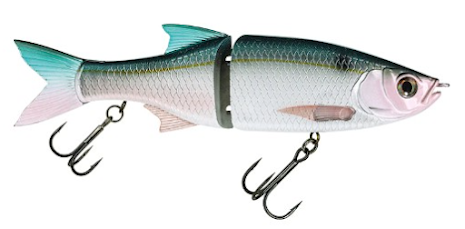Bass fishing in small ponds during the summer presents an exciting challenge for anglers of all skill levels. The bass in small ponds are often more aggressive than bass in larger bodies of water and can be caught using a variety of baits and techniques; an important consideration depending on the types of cover present.
Small ponds can be summer bass havens, providing great opportunities to hone your skills and catch some impressive bass i the process. However, summer bass in small ponds can be finicky at time, so it's important to understand their behavior and how to target them effectively.
Study the Pond's Structure and Cover: The first step in targeting bass effectively is to understand the pond's structure as well as the types of cover present. Look for areas with submerged vegetation, fallen trees, rocky outcrops, docks, subtle points, ditches and shallow flats. These are potential hotspots where bass are likely to hide and ambush their prey. Take some time to explore the pond's topography, especially in relation to cover and mark key spots on a map or in your mind for future reference.
Plan Your Fishing Times: During the summer, bass in small ponds tend to be most active during low light conditions during the early morning, late evening or cloudy days when the water temperature tends to be cooler. Plan your fishing trips accordingly, arriving at the pond well before sunrise, a few hours before sunset or when it very cloudy. Fishing during these times will increase your chances of encountering feeding summer bass and maximize your overall catch rate.
Adapt Your Bait Selection to Conditions: In small ponds, summer bass are often accustomed to feeding on natural forage, including small fish, insects like dragonflies, frogs, and crustaceans. Choose lures and baits that mimic their natural forage to increase your chances of catching more and bigger bass. Topwater lures, such as buzzbaits, frogs or poppers, can be effective during the early morning, on cloudy days, and late evening when bass are focused on active forage near the surface. When fishing during sunny days, change your bait selection to shallow crankbaits, spinnerbaits, chatterbaits, soft plastic baits, or jigs to fish the mid part of the water column and bottom structure/cover where bass seek shelter under those conditions.

Watch the Weather: Keep an eye on weather patterns as they greatly influence bass activity. Summer storms, for instance, can create feeding opportunities for bass. Rainfall often washes terrestrial insects into the water, triggering a feeding frenzy. Similarly, a slight drop in barometric pressure before a storm can make summer bass more active and willing to strike a variety of artificial baits.
Utilize Stealth When Bank Fishing: In small ponds bass are sensitive to disturbances and can be easily spooked. Approach the water with caution and be as stealthy as possible to minimize noise and casting unnatural shadows. To avoid making unnecessary noise, keep your movements slow and deliberate. Try using long casts to cover a larger area without getting too close to the bass holding in the shallows. Patience is key in these situations, so take your time and thoroughly but quietly work each potential hiding spot before moving on.
Target High-Percentage Areas: Focus on areas with structure and cover, such as points, ditches, lily pads, weed beds, fallen trees, and docks. Be sure and work your lure effectively around these features to provoke strikes from lurking bass.
Experiment with Retrieves: Vary your retrieves to find the right one and trigger a bass's predatory instinct. Work through a mix of slow, steady retrieves and quicker retrieves with more erratic movements to simulate struggling of fleeing prey. Bass are known to strike when they perceive an easy opportunity, so play around with different speeds, pauses, and jerks to entice them into biting.
Master the Art of Skipping: Skipping lures under overhanging trees or docks is a skill worth developing, especially when fishing small pond. This technique can be highly effective for reaching areas where summer bass hide and ambush their prey. Practice your skipping technique to deliver lures accurately and quietly into tight spaces, increasing your chances of triggering a strike from normally hard to reach bass.
Remember that small ponds can present unique challenges due to limited water depths, limited cover and potential increased fishing pressure. Be adaptable in your approach, try different techniques, and be patient. If a particular spot or lure isn't producing, don't be afraid to move around and experiment until you find what works.
























